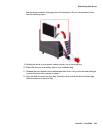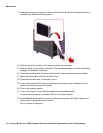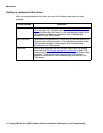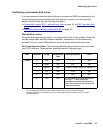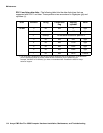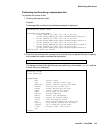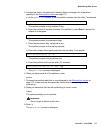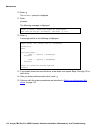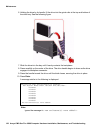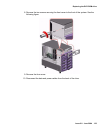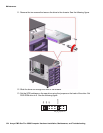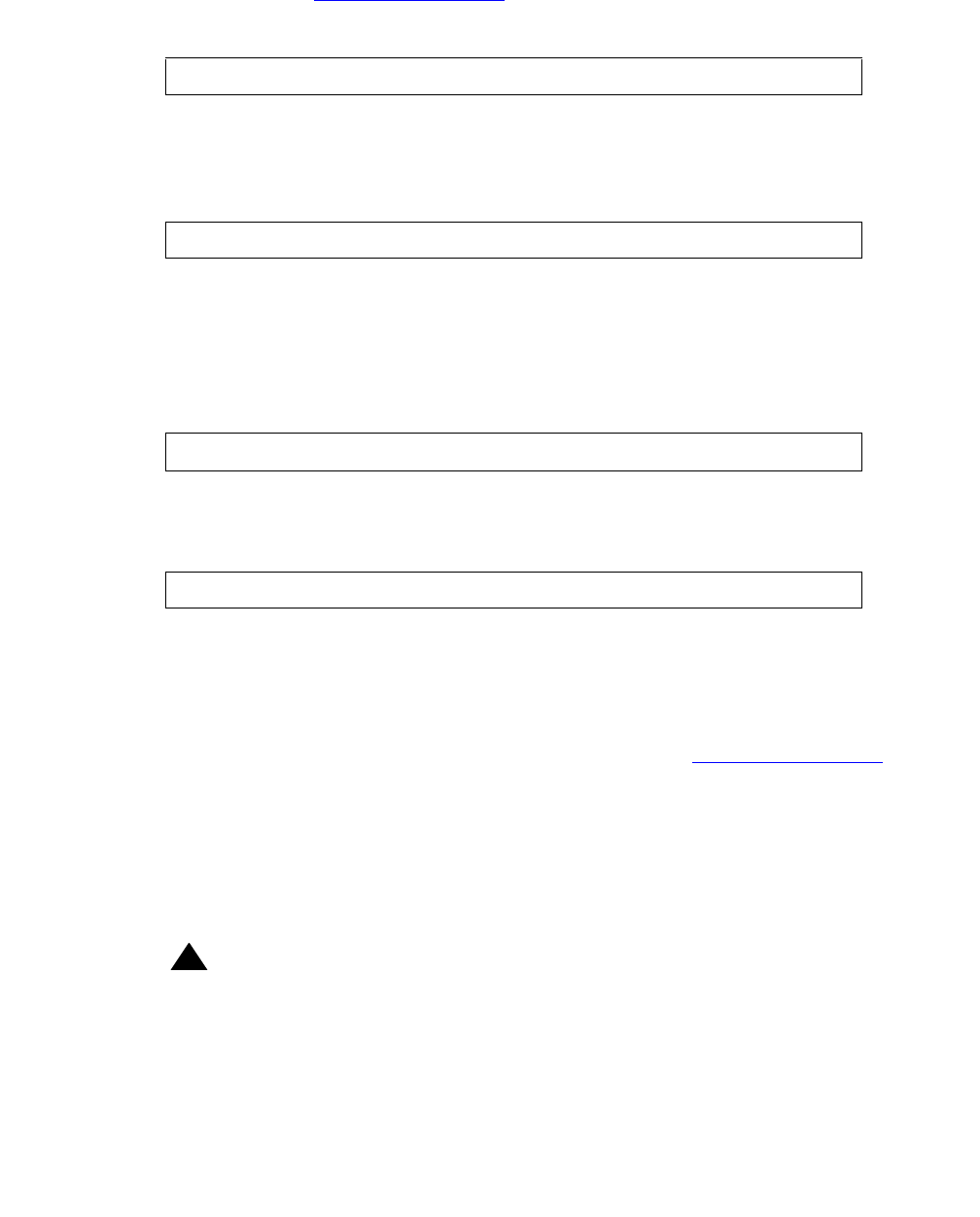
Maintaining disk drives
Issue 2.0 June 2004 117
5. Partition the disk by completing the following Steps a through e for all partitions
specified in the Disk partition values
on page 113.
a. At the partition> prompt, enter the partition number from the table. For example:
The system prompts for the partition ID tag.
b. Enter the partition ID tag from the table. For partition 0, press Enter to accept the
default of unassigned.
The system prompts for permission flags.
c. Enter the permission flag, usually wm or wu.
The system prompts for the starting cylinder.
d. Enter the number of the starting cylinder from the table. For example:
The system prompts for the partition size.
e. Enter the partition size from the table. For example:
The partition> prompt is displayed.
6. When you have sized all of the partitions, enter:
print
7. Compare the partition table that is now displayed to the Disk partition values
on
page 113. If there are any discrepancies, correct them by repeating the disk
partitioning.
8. When you determine that the disk partitioning is correct, enter:
label
The system prompts you to continue.
!
Important:
!
Important:
Important: Do not forget to label the disk drive.
9. Enter: y
The partition> prompt is displayed.
partition> 0
Enter partition id tag [unassigned]:
Enter new starting cyl [0]: 0
Enter partition size [0b, 0c, 0mb]: 2gb



